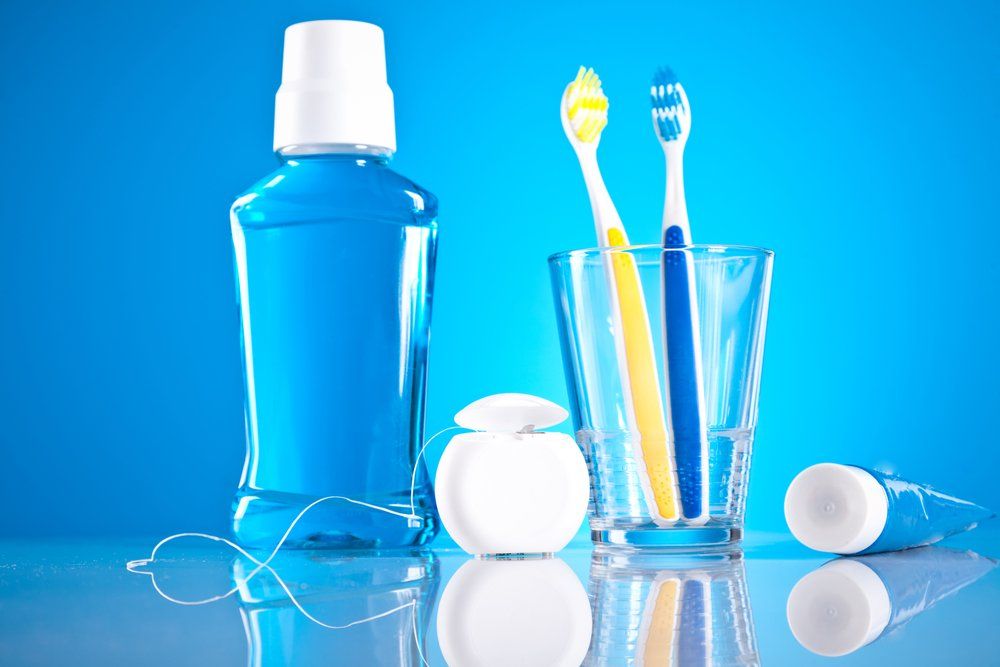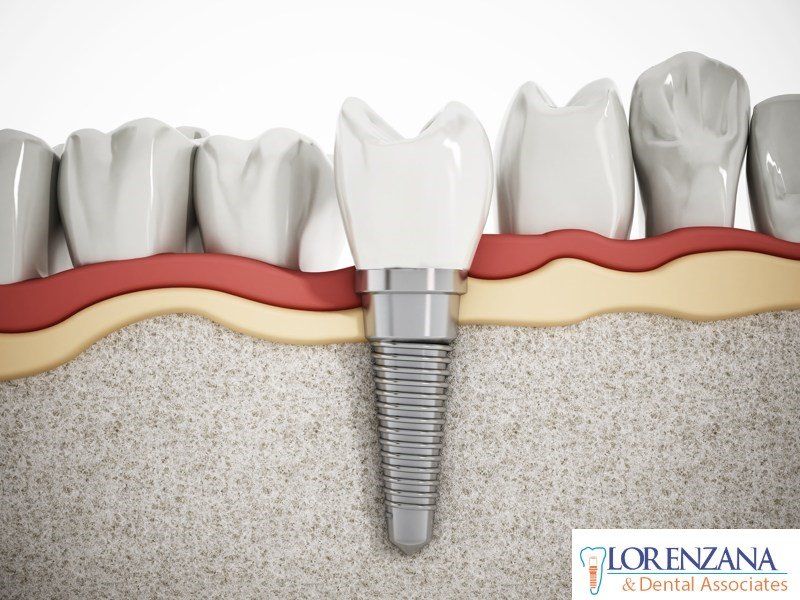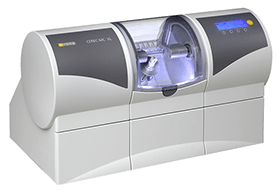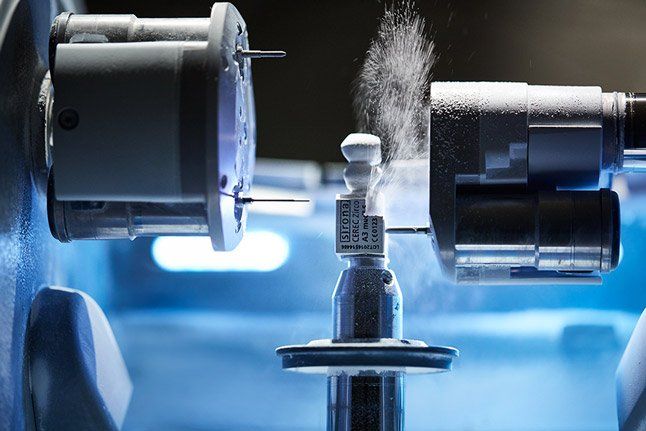Effects of Smoking on Dental Implants.
Dr. Rafael Lorenzana • May 22, 2014
Does smoking affect the dental implant process?It is a widely held belief that smokers are not suitable for dental implants.
This is not entirely true although being a non smoker will certainly increase the chances of a successful procedure and healing period. Smoking deprives the body of many nutrients and increases the risk of infection as well as reducing saliva flow which aids healing. This is especially relevant around the gums which are subjected, often on a regular basis, to a large intake of smoke when a cigarette is inhaled. This may also affect the bone structure of the jaw which can affect the way that an implant is held in place.
Some dentists have been known to refuse to place dental implants into heavy smokers but this is not always necessary. Patients are advised to stop smoking at least for a period prior to and after the procedure, often for around two months either side. By doing this, the chances of a successful procedure are significantly increased and rejection is much less likely. Of course, it is better still to stop permanently although ultimately, this has to be the choice of the patient.
The formation of deep mucosal pockets with inflammation of the peri-implant mucosa around dental implants is called peri-implantitis. Smokers treated with dental implants have a greater risk of developing peri-implantitis. This condition can lead to increased resorption of peri-implant bone. If left untreated, peri-implantitis can lead to implant failure. Although smoking is perhaps the worst culprit to cause implant failure, it is important to note that any nicotine intake can have a similar effect.
Even nicotine patches or gum will have an effect on the osseointegration of the jaw bone and implant; i.e. the bonding of the two to provide a firm anchor on which the crown is to be placed. As well as potentially causing thinning of the bone, making it less likely for an implant to take, smokers have a notoriously poor healing response and it is because of this that it is equally important to stop smoking after the procedure, at least for a period of time. It is easy to think that once the implant has been placed, that you can go back to your usual smoking habits. This would be a mistake though as it increases the risk of infection, and especially having actual smoke with its carbon monoxide pouring around the area of the gums that have been performed on, is likely to drastically increase the risk of failure of the implant to bond.
Cigarette smoking has long been known to be associated with a variety of oral conditions including periodontal disease, bone loss, tissue loss, tooth loss, edentulism, peri-implantitis and dental implant failure. Sometimes, even if a patient agrees to stop smoking for a period prior to the procedure, a significant amount of damage may already have been caused, especially the deterioration of the jawbone. This does not necessarily mean, however, that the implant can’t be placed into the jaw but a bone graft may be needed to provide sufficient bone structure for the implant to succeed.
Whichever course of treatment patients decide to pursue, they can expect slower healing and a greater possibility of failure if they continue to smoke during or following treatment healing period. If patients stop smoking three to four weeks prior to implant placement and remain smoke free during the healing period, results MAY improve. Some dentists do place dental implants in smokers, but these patients must be aware of the increased risk they assume.
Efectos del tabaquismo en los implantes dentales.
¿El fumar afecta el proceso de implante dental? Es una creencia ampliamente difundida que los fumadores no son aptos para implantes dentales.
Esto no es del todo cierto, aunque ser un no fumador sin duda aumentará las posibilidades de un procedimiento exitoso y el período de curación. Fumar priva al cuerpo de muchos nutrientes y aumenta el riesgo de infección, además de reducir el flujo de saliva que ayuda a la curación. Esto es especialmente relevante alrededor de las encías que están sujetas, a menudo de forma regular, a una gran ingesta de humo cuando se inhala un cigarrillo. Esto también puede afectar la estructura ósea de la mandíbula, lo que puede afectar la forma en que se mantiene un implante en su lugar.
Algunos dentistas se han negado a colocar implantes dentales en personas que fuman mucho, pero esto no siempre es necesario. Se aconseja a los pacientes dejar de fumar al menos durante un período anterior y posterior al procedimiento, a menudo durante aproximadamente dos meses de cada lado. Al hacer esto, las posibilidades de un procedimiento exitoso aumentan significativamente y el rechazo es mucho menos probable. Por supuesto, es mejor detenerse permanentemente aunque, en última instancia, debe ser la elección del paciente.
La formación de bolsas profundas en la mucosa con inflamación de la mucosa periimplantaria alrededor de los implantes dentales se denomina periimplantitis. Los fumadores tratados con implantes dentales tienen un mayor riesgo de desarrollar periimplantitis. Esta condición puede conducir a una mayor resorción del hueso periimplantario. Si no se trata, la periimplantitis puede provocar una falla del implante. Aunque fumar es quizás el peor culpable de causar una falla en el implante, es importante tener en cuenta que cualquier ingesta de nicotina puede tener un efecto similar.
Incluso los parches de nicotina o las encías tendrán un efecto sobre la osteointegración del hueso de la mandíbula y el implante; es decir, la unión de los dos para proporcionar un ancla firme sobre la cual se colocará la corona. Además de causar un adelgazamiento del hueso, por lo que es menos probable que un implante tome, los fumadores tienen una respuesta de curación notoriamente deficiente y es por eso que es igualmente importante dejar de fumar después del procedimiento, al menos por un período de tiempo. Es fácil pensar que una vez colocado el implante, puede volver a sus hábitos habituales de fumar. Sin embargo, esto sería un error ya que aumenta el riesgo de infección, y especialmente tener un humo real con su monóxido de carbono vertiéndose alrededor del área de las encías en las que se ha realizado, es probable que aumente drásticamente el riesgo de falla del implante para unirse .
Se sabe desde hace mucho tiempo que fumar cigarrillos está asociado con una variedad de afecciones orales que incluyen enfermedad periodontal, pérdida ósea, pérdida de tejido, pérdida de dientes, edentulismo, periimplantitis e insuficiencia de implantes dentales. Algunas veces, incluso si un paciente acepta dejar de fumar durante un período anterior al procedimiento, es posible que ya se haya causado una cantidad significativa de daño, especialmente el deterioro del hueso maxilar. Esto no significa necesariamente, sin embargo, que el implante no pueda colocarse en la mandíbula, pero puede ser necesario un injerto óseo para proporcionar una estructura ósea suficiente para que el implante tenga éxito.
Independientemente del curso de tratamiento que los pacientes decidan realizar, pueden esperar una curación más lenta y una mayor posibilidad de fracaso si continúan fumando durante o después del período de curación del tratamiento. Si los pacientes dejan de fumar de tres a cuatro semanas antes de la colocación del implante y permanecen sin fumar durante el período de cicatrización, los resultados PUEDEN mejorar. Algunos dentistas colocan implantes dentales en fumadores, pero estos pacientes deben ser conscientes del mayor riesgo que asumen.
Esto no es del todo cierto, aunque ser un no fumador sin duda aumentará las posibilidades de un procedimiento exitoso y el período de curación. Fumar priva al cuerpo de muchos nutrientes y aumenta el riesgo de infección, además de reducir el flujo de saliva que ayuda a la curación. Esto es especialmente relevante alrededor de las encías que están sujetas, a menudo de forma regular, a una gran ingesta de humo cuando se inhala un cigarrillo. Esto también puede afectar la estructura ósea de la mandíbula, lo que puede afectar la forma en que se mantiene un implante en su lugar.
Algunos dentistas se han negado a colocar implantes dentales en personas que fuman mucho, pero esto no siempre es necesario. Se aconseja a los pacientes dejar de fumar al menos durante un período anterior y posterior al procedimiento, a menudo durante aproximadamente dos meses de cada lado. Al hacer esto, las posibilidades de un procedimiento exitoso aumentan significativamente y el rechazo es mucho menos probable. Por supuesto, es mejor detenerse permanentemente aunque, en última instancia, debe ser la elección del paciente.
La formación de bolsas profundas en la mucosa con inflamación de la mucosa periimplantaria alrededor de los implantes dentales se denomina periimplantitis. Los fumadores tratados con implantes dentales tienen un mayor riesgo de desarrollar periimplantitis. Esta condición puede conducir a una mayor resorción del hueso periimplantario. Si no se trata, la periimplantitis puede provocar una falla del implante. Aunque fumar es quizás el peor culpable de causar una falla en el implante, es importante tener en cuenta que cualquier ingesta de nicotina puede tener un efecto similar.
Incluso los parches de nicotina o las encías tendrán un efecto sobre la osteointegración del hueso de la mandíbula y el implante; es decir, la unión de los dos para proporcionar un ancla firme sobre la cual se colocará la corona. Además de causar un adelgazamiento del hueso, por lo que es menos probable que un implante tome, los fumadores tienen una respuesta de curación notoriamente deficiente y es por eso que es igualmente importante dejar de fumar después del procedimiento, al menos por un período de tiempo. Es fácil pensar que una vez colocado el implante, puede volver a sus hábitos habituales de fumar. Sin embargo, esto sería un error ya que aumenta el riesgo de infección, y especialmente tener un humo real con su monóxido de carbono vertiéndose alrededor del área de las encías en las que se ha realizado, es probable que aumente drásticamente el riesgo de falla del implante para unirse .
Se sabe desde hace mucho tiempo que fumar cigarrillos está asociado con una variedad de afecciones orales que incluyen enfermedad periodontal, pérdida ósea, pérdida de tejido, pérdida de dientes, edentulismo, periimplantitis e insuficiencia de implantes dentales. Algunas veces, incluso si un paciente acepta dejar de fumar durante un período anterior al procedimiento, es posible que ya se haya causado una cantidad significativa de daño, especialmente el deterioro del hueso maxilar. Esto no significa necesariamente, sin embargo, que el implante no pueda colocarse en la mandíbula, pero puede ser necesario un injerto óseo para proporcionar una estructura ósea suficiente para que el implante tenga éxito.
Independientemente del curso de tratamiento que los pacientes decidan realizar, pueden esperar una curación más lenta y una mayor posibilidad de fracaso si continúan fumando durante o después del período de curación del tratamiento. Si los pacientes dejan de fumar de tres a cuatro semanas antes de la colocación del implante y permanecen sin fumar durante el período de cicatrización, los resultados PUEDEN mejorar. Algunos dentistas colocan implantes dentales en fumadores, pero estos pacientes deben ser conscientes del mayor riesgo que asumen.
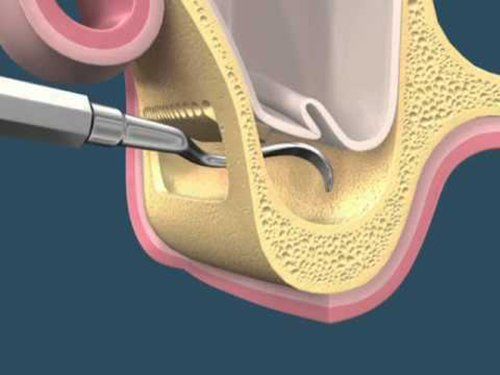
¿Qué Es? El levantamiento de seno maxilar es una cirugía que agrega hueso a tu maxilar superior en el área de tus molares y premolares. El hueso es agregado entre tu maxilar y tus senos maxilares, los cuales se encuentran a cada lado de tu nariz. A modo de hacer espacio para el hueso, la membrana sinusal necesita ser levantada. ¿Para Qué Se Usa? Un levantamiento de seno se realiza cuando no hay suficiente altura en el hueso del maxilar, o cuando los senos están demasiado próximos al maxilar, y los implantes dentales no se pueden colocar por tal motivo. Hay varias posibles razones para que esto suceda: · Muchas personas que han perdido los dientes de su maxilar superior — particularmente los dientes posteriores o molares — no tienen suficiente hueso para que los implantes dentales sean colocados. Una vez se pierde un diente, el hueso en esa área comienza a ser reabsorbido. Si los dientes han estado ausentes por un largo tiempo, con frecuencia no hay suficiente hueso restante para colocar implantes. · Se pudo haber perdido hueso debido a alguna enfermedad periodontal (de las encías). · El seno maxilar puede estar demasiado próximo al maxilar superior. La forma y tamaño del seno varía de persona a persona. El seno también puede agrandarse a medida envejeces. ¿Cómo Se Hace? Tu cirujano hará una incisión y levantará la encía donde tus dientes posteriores solían estar, exponiendo el hueso. Se hace un pequeño agujero ovalado en el hueso. La membrana que reviste el seno en el lado opuesto al agujero separa tu seno de tu maxilar. Esta membrana se empuja suavemente hacia arriba y lejos de tu maxilar. Material de injerto óseo es insertado en el espacio donde el seno solía estar. Una vez el hueso está en su lugar, el tejido es suturado. Lo Que Sigue Después del procedimiento, podrías tener algo de inflamación en el área y podrías sangrar por tu boca o nariz. No te suenes la nariz o estornudes con fuerza. Hacer eso podría causar que el material de injerto óseo se mueva y que los puntos de sutura se aflojen. Puede ser que tu dentista te prescriba medicina para prevenir el congestionamiento y la inflamación. También necesitarás medicina para el dolor, un antibiótico y enjuague bucal antimicrobiano para prevenir una infección. La mayoría de los pacientes solamente experimentarán un poco de incomodidad luego de un procedimiento de levantamiento de seno. Verás al especialista luego de algunos días. Él/ella evaluará el sitio de la cirugía y retirará los puntos de sutura si fuese necesario. Podrías tener que visitar al especialista un par de veces más para que se asegure de que el área está sanando apropiadamente. Tus implantes se colocarán entre cuatro y nueve meses después del levantamiento de seno, dependiendo de la cantidad de hueso requerida. Esto permite que haya tiempo para que el material de injerto óseo se una a tu hueso.
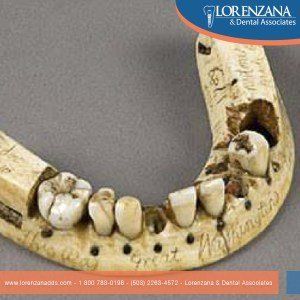
Hoy en día la prótesis dental nos permite reemplazar los dientes perdidos con un aspecto muy estético y natural, devolviendo a la boca la función perdida; pero eso no fue siempre así. Las primeras prótesis dentales de las que tenemos constancia provienen de los etruscos del siglo VIII a. C. y se conserva en el Museo de la Facultad de Odontología de París. Los etruscos utilizaron dientes de animales para reemplazar las piezas faltantes ensambladas sobre bandas de oro, lo cual muestra habilidades muy altas por parte de ellos. Creemos que los fenicios ya usaron oro blando y alambre de oro para la construcción de prótesis dentales. También utilizaron soldaduras y modelos de impresiones. Hacia 754 aC , los etruscos, hábiles artesanos de la época, producían pónticos muy complejos. Empleaban bandas de oro soldadas cada una por pónticos hechos con diferentes piezas dentales de humanos o animales.
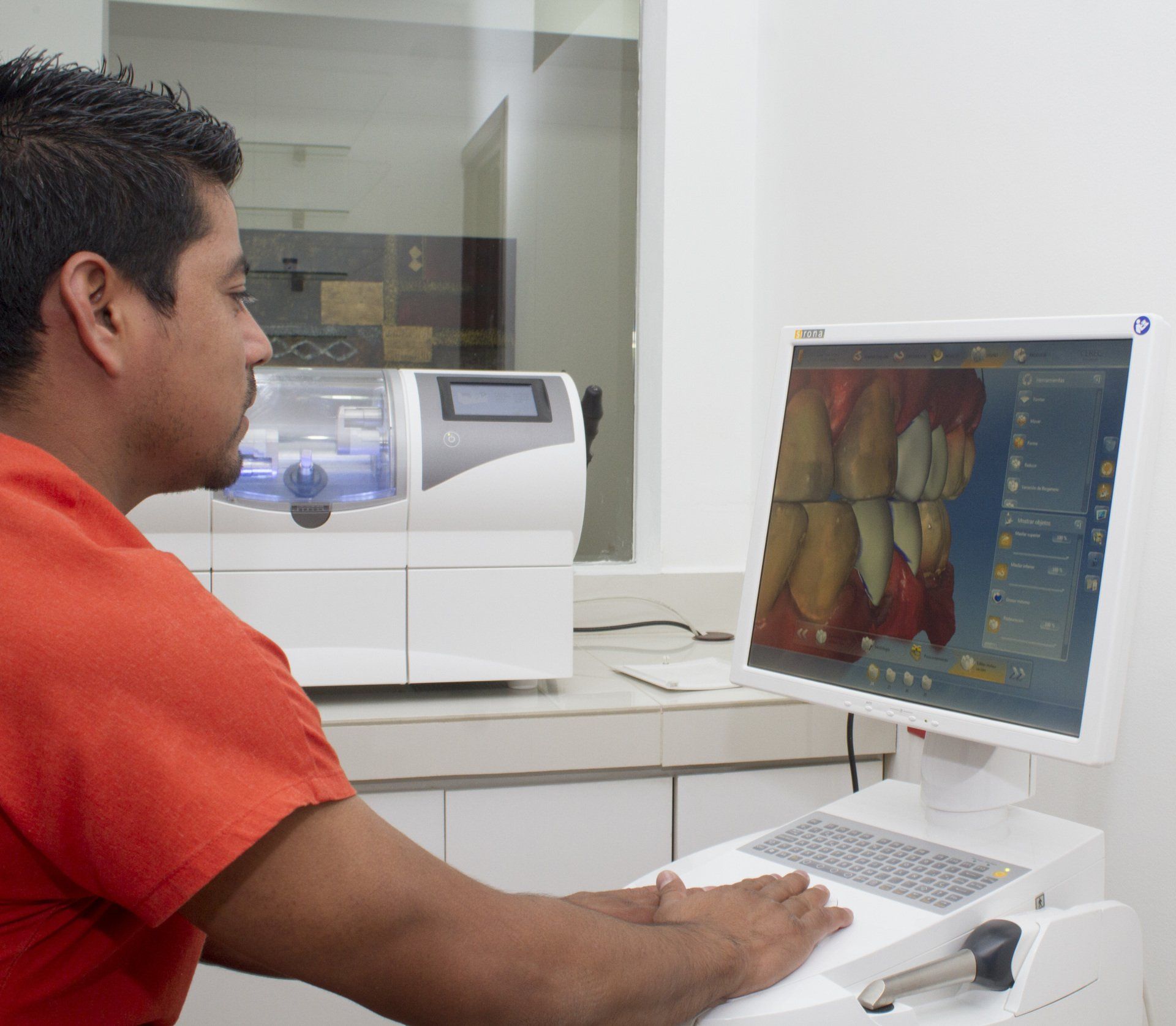
At Lorenzana & Dental Associates, we love our CEREC system - and our patients love it, too! Thanks to CEREC, we can give people the convenience of getting their teeth fixed (e.g. crowns, veneers) in as little as a single visit to our clinic. That is just impressive, right? But how did such an incredible technology as CEREC come into existence? Well, we will talk a little about that in this blog, which is the first in a series of blogs about this system. Let's get to it!
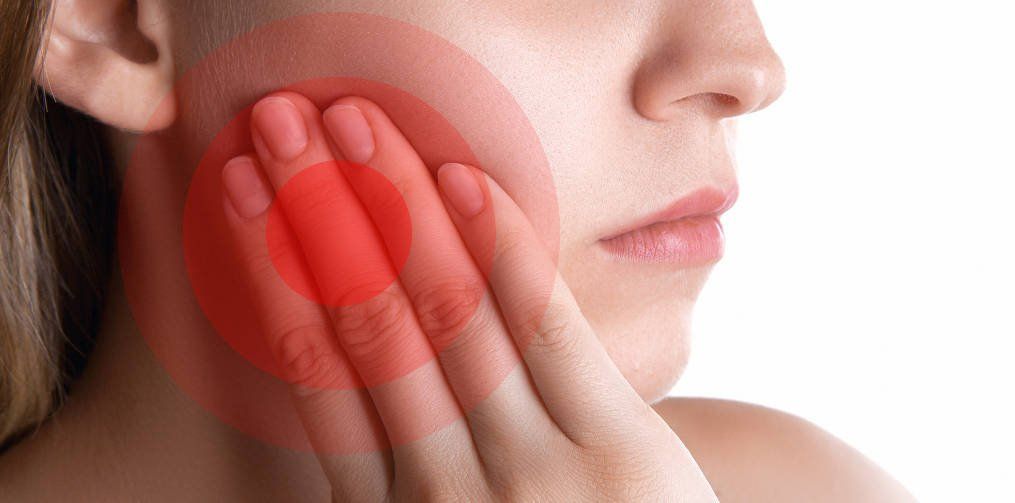
Temporomandibular joint disorders are conditions that cause discomfort and inhibit the proper functioning of the jaw joint and muscles that control jaw movement. Causes In most cases, the cause of TMJ disorders is not evident. However, here is a list of potential causes: External trauma, such as a hard hit to the head or jaw. Tooth grinding or jaw clenching. Poor alignment between top and bottom teeth. Excessive chewing (e.g. gum or fingernails). Overextending the TMJ while eating large things. Degenerative diseases. Symptoms There are various symptoms that could be related to TMJ disorders. Examples of these are the following: Pain in facial, jaw, neck or back muscles. Swelling. Muscle stiffness or limited movement of the jaw. Clicking, popping or grating sounds accompanied by pain when moving the jaw. Teeth not fitting comfortably together. Jaw not opening uniformly or locking. Headache or earache. Difficulty swallowing. Diagnosis There is not always a straightforward way of diagnosing TMJ disorders. Exact causes and symptoms are not clear, and that means the discomfort someone is experimenting could be due to different health issues. Your doctor will take your symptoms and medical history into consideration and then will examine areas of discomfort, including the head, neck, face, and jaw. The doctor might also use x-rays in the analysis of your case. Treatment Reversible Treatments Conservative treatments do not invade the tissues of the face, jaw, or joint, or involve surgery. Reversible treatments do not cause permanent changes in the structure or position of the jaw or teeth. It is advisable that you try these first, before considering more expensive and permanent ones. Muscle and ligament tightness can be helped with jaw stretching and relaxing exercises as advised by your doctor. If the jaw becomes locked, it may be necessary to manipulate the joint back into place under a general anaesthetic. The most common TMJ issues are temporary and do not get worse. Short-term use of pain relievers, such as ibuprofen, may be sufficient. A stabilization splint or a bite guard may provide relief. Stabilization splints should only be used for a short time and should not cause permanent changes in bite. Permanent Treatments There is often debate around the use of permanent methods to treat TMJ disorders. There are no long term studies that show the efficacy of these methods, plus they are extensive and often more expensive than reversible treatments. The bite may be adjusted by polishing teeth, using reconstructive dentistry, or fitting braces. A repositioning splint may be fitted, which over time will permanently change the position of the jaw, ligaments and muscles. There may be an effect on teeth alignment, so more dental work may be needed to adjust the teeth. There is even the option to replace the jaw joint with artificial implants, but it should be considered a last resort. Self-Care In many cases, self-care measures can help alleviate the symptoms of TMJ disorders: Eating soft foods. Applying cold or warm compresses. Avoiding excessive jaw movements (shouting, gum-chewing, and wide yawning, for instance). Practicing gentle jaw stretching and relaxing exercises. Resting the jaw as much as possible. SOURCES: National Institute of Dental and Craniofacial Research Health Navigator



